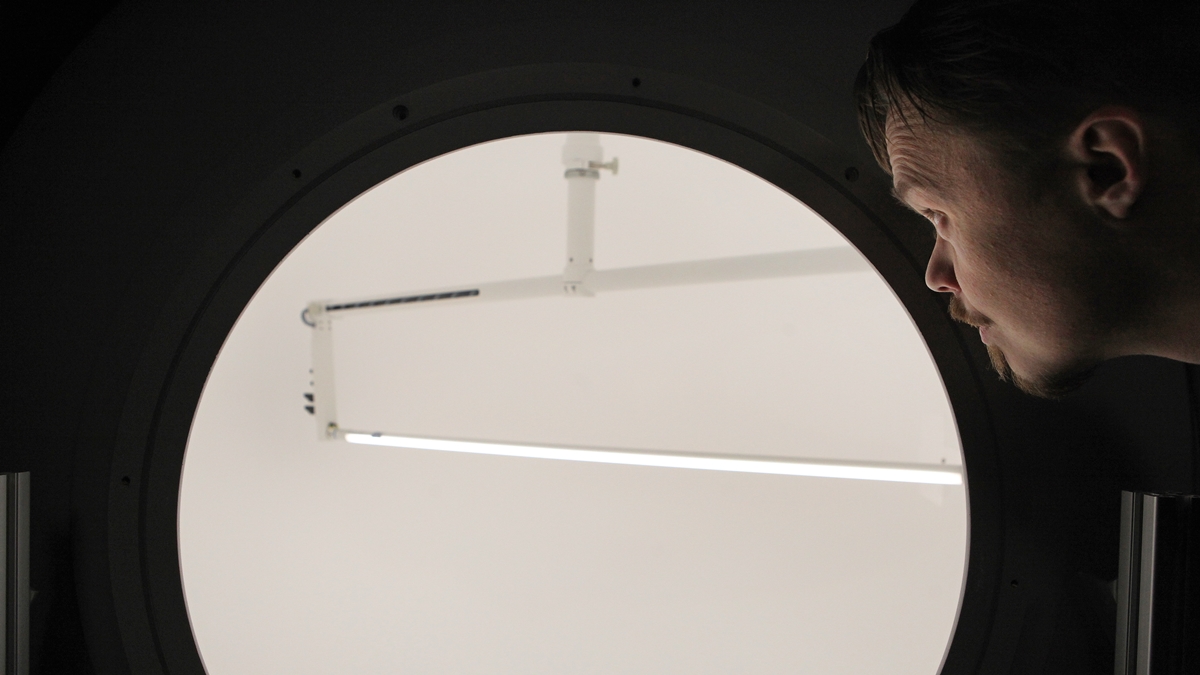Lighting, colour, and radiation laboratory

Goniophotometer measurements
This measurement is important in order to understand how light spreads at various angles from a light source.
The measurement is particularly useful in the lighting industry, where it is important to design luminaires that distribute light so it meets specific lighting requirements.
Ultraviolet light measurements
Involves assessing the amount of ultraviolet light, a type of electromagnetic radiation with a short wavelength. UV light lies outside the visible spectrum that our eyes can normally perceive.
Measuring UV light is important in various applications, such as disinfection of viruses and bacteria or in industrial lighting to evaluate the emission of UV light from light sources. These measurements help to understand and control UV light exposure, which can have implications for health and technological processes.
Contact
Dennis Dan Corell Research Engineer ddco@dtu.dk